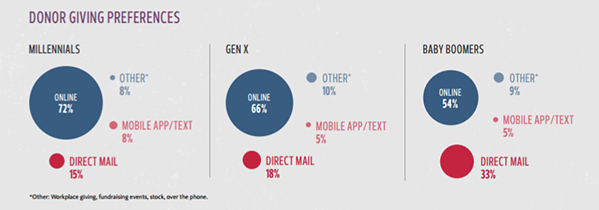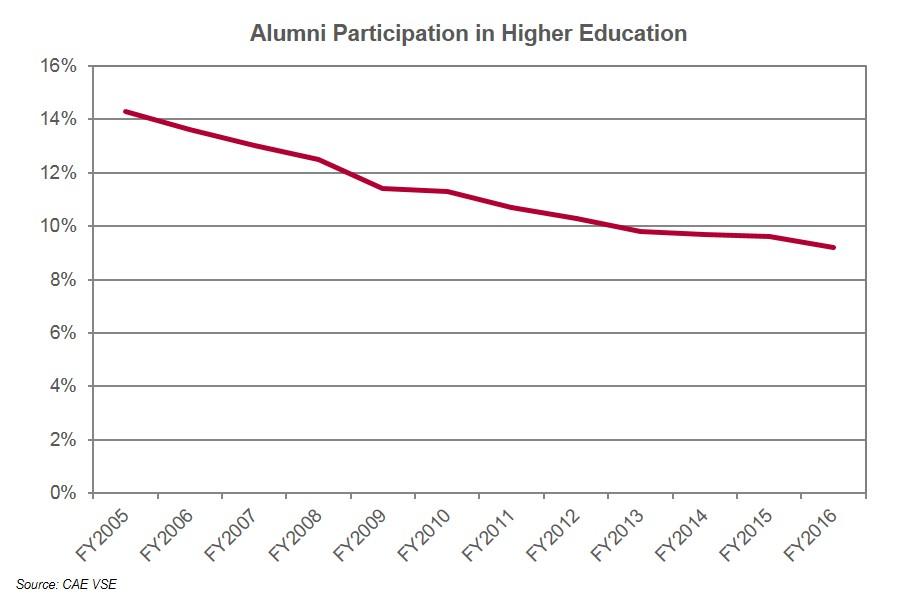Nearly two years ago, I wrote a piece about the rise of the digital gift officer. I was working at Cornell University’s office of alumni affairs and development and had just received a 350-person portfolio. We dared to offer the notion that someone within a higher ed advancement office could manage prospects using digital media and online communications. I shared a few early successes and then, I vanished.
All right, “vanished” is dramatic. In the summer of 2016, I accepted a new position at a science institute to build a new advancement program. But ever since, I’ve been inundated with emails and calls regarding the concept of a digital gift officer.
Digital Gift Officers: A Must, Not a Nice-to-Have
While I thought the concept made sense in 2016, it makes even more sense now. The stage is set for a new type of donor-gift officer relationship, thanks to increased time spent online, our dependence on mobile, the ease of video conferencing, and the increasing preference for online giving.
Here’s a few stats that back me up (via NonProfitsSource.com):
- Between 2016 and 2017, online giving increased by nearly $4 billion
- 51% of high-wealth donors (over $200k) prefer to give online
- From 2016 to 2017, the number of smartphone owners who made mobile payments increased by 36%
- 21% of donations come directly through social media
- In 2017, online giving was 11.7% higher than forecast in the previous year
- 57% of people who watch non-profit youtube videos go on to make a donation
Life is Digital
We socialize online. We connect with family online. We pay our bills online. We meet our spouses online. We LIVE online. This is no longer just a young person’s preferred lifestyle; this is how society operates.

Donor Behavior Demands that Advancement Changes
The private sector offers frequent reminders of what happens if we forget to look ahead.
My father worked at IBM for more than 25 years. IBM was the definition of business professionalism. Every day, my dad left the house in a full suit and briefcase. Then, one day, IBM shocked the world by converting to business casual. My dad’s closet that was formerly full of suits became a haven for khakis and button-ups (though he maintained his dedication to the pocket-protector).
Similarly, I recall a colleague at Cornell saying, “I’ve been here long enough to remember when people said email is far too informal for communicating with donors.”
The times change. Donor expectations change with them.
Now, for the right prospect, a brief Twitter chat can be more effective than flying cross-country for an introductory meeting over coffee.
A prospect’s most precious resource isn’t their money. It’s their time. Today, efficiency must trump formality.
Fear of changing business-as-usual is understandable. However, the time and expense associated with face-to-face cultivation combined with the budgetary constraints of the higher ed/non-profit sector means we must shift our way of engaging prospects, especially those who prefer a digital relationship.
Start Small, Demonstrate Impact
Even if the digital gift officer starts small with a few dozen prospects or a percentage of a portfolio, exploring this concept offers an opportunity to build a blueprint for the future. While the Greatest Generation and Boomers continue to fill the coffers through traditional avenues, we need Gen Xers and Millennials to create pipeline beyond the next 10 years. These are generations who require inspiration, not obligation, to give. That may explain some of why alumni participation rates continue to freefall.

These donors want to know where their money is going regardless if they give $25 or $25,000. They require innovative cultivation that utilizes the latest forms of digital content delivered in the most popular online communities. (Have you thought up your first augmented reality solicitation? Now’s the time!)
Discomfort with disrupting our day-to-day should not outweigh what donors want. It’s on us to move our organizations forward, meet donors where they are, and offer them relationship they expect. We must have the courage to carve out an area for experimentation and place bets on strategies that will sustain our organizations for the long-term.
The Results Are In…
A former Cornell colleague reached out a couple months ago and asked, “Does this name sound familiar to you?”
She had just returned from visiting this person, an alumnus who I had nominated for major gifts tracking two years earlier. Turns out, this previously untracked, unengaged donor who connected through one of our online communities has since made gifts of $5,000 and $15,000.
This latest trip yielded a new $25,000 gift, and this alumnus is on track for a future six-figure donation.
This shouldn’t be surprising. Other schools are doing the same, again and again.
Digital donor engagement does not have to operate in a vacuum. There are opportunities to implement a hybrid model where a digital relationship transitions to face-to-face—where a portion of every development officer’s outreach is dedicated to digital. Much like email hasn’t killed direct mail, embracing digital cultivation doesn’t mean you must abandon traditional travel. The donor’s preference ultimately should dictate the evolution of the relationship.
Two years after suggesting we create a new type of a gift officer that utilizes modern tools to engage prospects, current trends support the notion that we need to iterate how we build relationships with our community. I hope my phone and email blowing up with interest in the digital gift officer concept is a sign that the industry is ready to make an investment in a model of digital cultivation, solicitation, and stewardship that serves the present and builds the future.
Keith Hannon is the Associate Director of Communications and Alumni Relations at the Boyce Thompson Institute, an organization that aims to advance and communicate scientific discovery in plant biology to improve agriculture, protect the environment, and enhance human health. Previously, he was the Associate Director for Digital Innovation in the Cornell University Office of Alumni Affairs and Development.